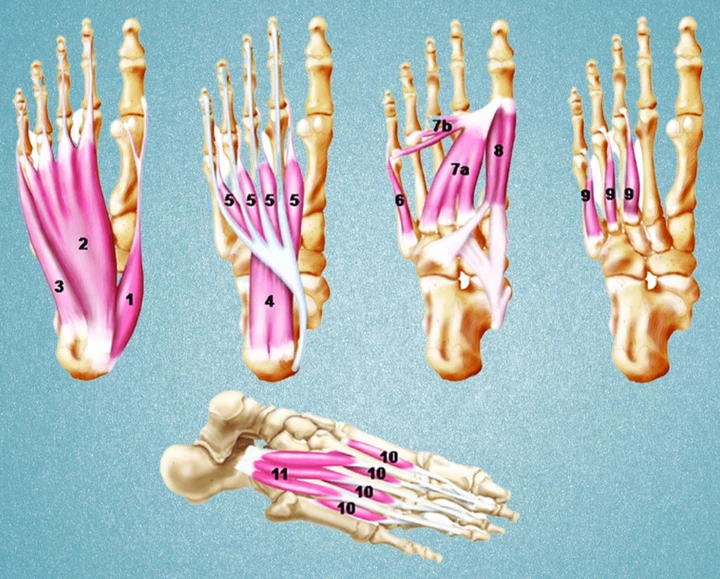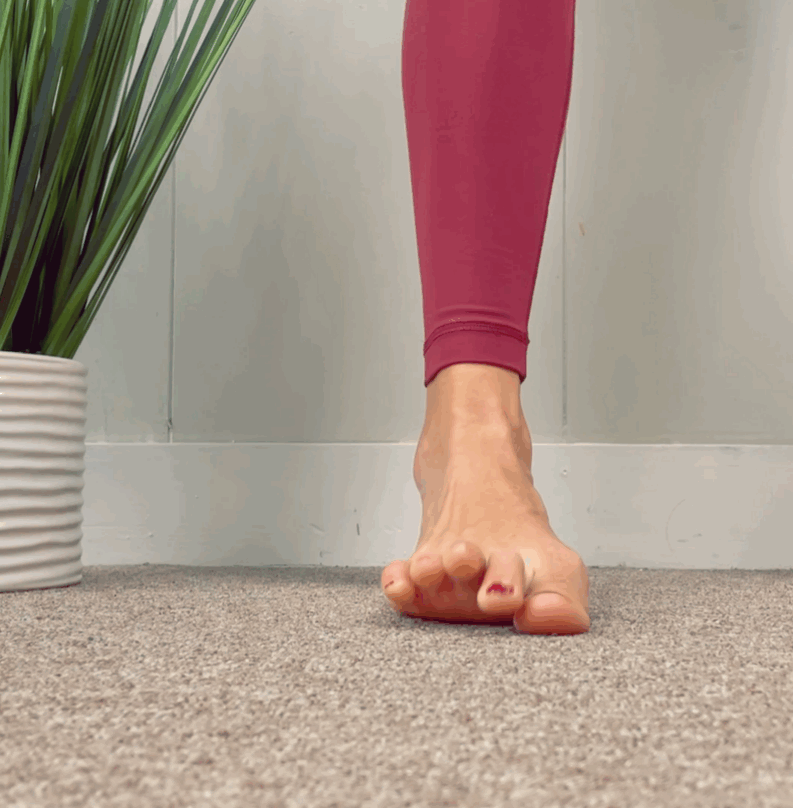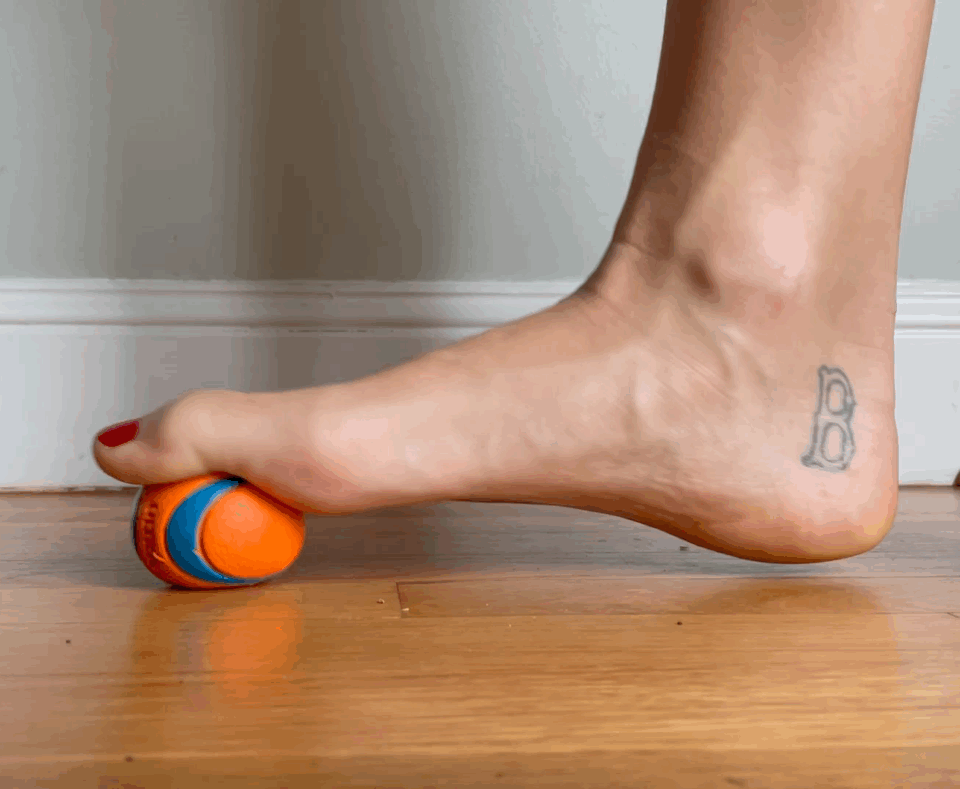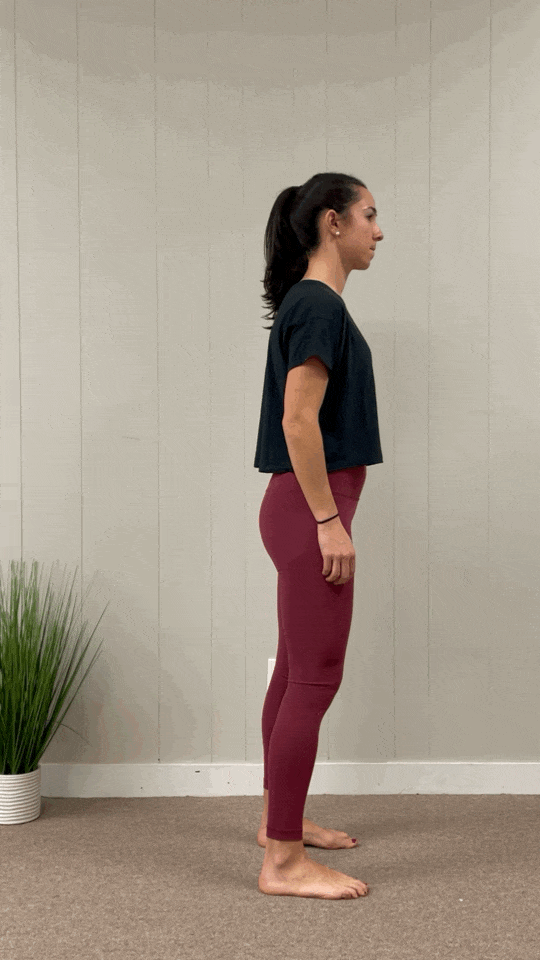Foot Strength to Prevent Running Injuries
Did you know that the annual running-related injury incidence is as high as 80% in long-distance runners? That’s a staggering number compared to injury rates in other sports. This study looked to identify if foot and ankle strengthening in recreational runners could reduce that rate. And the good news...it did! By 2.42 times in fact!
A Quick Anatomy Review
There are 11 distinct “intrinsic” muscles of your foot which are distributed in 4 layers. A lot of muscle in one small space. Their primary function is to act as the first line of defense in maintaining the arch of your foot. Intrinsic muscles mean they originate and insert within the confines of the foot and don’t cross up into your lower leg or play any role in ankle movement. Extrinsic muscles are muscles that also play a role at the foot and maintaining arch integrity but they cross up into the lower leg and have the primary function of ankle movement.
So...intrinsics = first line of defense.
When weak or activity demand is high - extrinsics assist.
If both are weak → collapse of midfoot (over-pronation) and ↓ ability to absorb forces of running.
The Study
118 recreational runners were split into 2 groups. The intervention group performed foot/ankle strengthening 3x/wk for 1 year and researchers tracked injury occurrence over the course of that year. Here are the important takeaways…
Foot/ankle strengthening lead to 2.42x less running related injuries
Data suggests about 4-8 months of strengthening for optimal protection
NONE of the intervention group experienced a bone stress injury
There was a variety of shoe types in both groups with no difference in overall structure between the 2
There were no novice runners, all participants were experienced recreational runners
Most common injuries in the control group were hamstring strain and patellofemoral pain
Breakdown
↑ strength of foot/ankle helps dissipate load by providing a dampening effect with landing and spring effect with takeoff.
It’s notable that the runners were all experienced, which tells us that the act of just running frequently alone isn’t enough to provide sufficient strength
The inclusion of a variety of shoe structures suggests that foot strength is important for ANY type of footwear even if there is a built in motion control component.
↓ injuries up the chain demonstrates the importance of foot core strength to prevent ALL types of injuries, not just foot/ankle.
Application
Recognize that this demands consistency and commitment to these exercises. Generally, it takes at least 6-8 weeks for muscle hypertrophy and the suggestion is 3x/wk for 4-8 months. The good news is you can perform most of these exercises with minimal equipment and even do them while brushing your teeth or watching TV.
Start with foot exercises in sitting and progress into weightbearing, then from double leg →
single leg, add a dynamic challenge and finally challenge the strength plyometrically.
Scroll down for a few examples of foot core exercises, in order of difficulty, that you can start today!
If you're looking to up your foot core game from the basics, there's a few nice pieces of equipment out there like the Toe Pro and Mobo Board.
If you're looking for some guidance on how to apply these ideas to be a healthier runner, you can schedule your first session with us today! We have services covering both the injured and healthy runner alike.
Somerville, MA
Reference
1) Taddei et al. Foot Core Training to Prevent Running-Related Injuries: A Survival Analysis of a Single-Blind, Randomized Controlled Trial. Am J Sports Med. 2020















